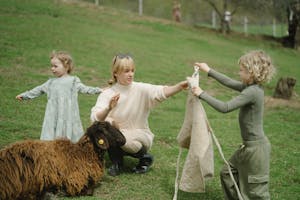Introduction: Parenting and Pets Go Hand in Hand
Raising children alongside animals isn’t just about creating a lively home—it’s about shaping character, empathy, and responsibility from an early age. Pets teach kids lessons that even the best schools cannot: how to care, how to listen without words, how to love unconditionally, and how to respect boundaries. These lessons last a lifetime and help children grow into more patient, kind, and emotionally intelligent adults.
In many ways, pets become silent co-parents, offering unique learning experiences that strengthen the family bond and nurture a child’s heart.
Why Growing Up With Pets Benefits Children Emotionally and Mentally
Building Empathy and Compassion
Animals require gentle care and understanding. Through feeding, grooming, and observing their pet’s moods, children naturally learn empathy. They recognize when their dog feels scared, when their cat needs space, or when their rabbit is happy and content. This awareness transfers to how they treat people—with kindness, patience, and compassion.
Reducing Stress and Anxiety
Pets offer non-judgmental comfort. Children who face challenges—bullying, anxiety, or loneliness—often find solace in the quiet companionship of a pet. Simply petting a dog or listening to a cat’s purr can calm nerves and provide emotional security.
Encouraging Responsibility and Routine
Daily tasks like feeding, walking, and cleaning up after a pet instill responsibility. Children understand that animals depend on them, and this teaches accountability and commitment—valuable life skills that benefit them well beyond childhood.
How Pets Strengthen Family Bonds
Shared Activities Create Connection
Families that walk the dog together, play with the cat, or build a rabbit hutch are spending quality time together. These shared routines create opportunities for conversation, teamwork, and laughter. Pets often become the heart of family traditions—celebrating birthdays, holidays, or simply enjoying lazy Sundays together.
Teaching Respect and Boundaries
Children learn to respect an animal’s signals—when to play, when to give space, and how to handle them gently. These lessons help kids understand the importance of boundaries, patience, and reading non-verbal cues—skills that improve relationships with both animals and people.
Tips for Parents Introducing Pets to Family Life
Choose the Right Pet for Your Family
Consider energy levels, lifespan, and care requirements. A high-energy dog might overwhelm a toddler; a senior cat might prefer a quieter home. Research breeds and species to ensure a good fit for your lifestyle and your children’s ages.
Involve Kids in Care from Day One
Even young children can help with simple tasks: filling food bowls, brushing fur, or helping wash water dishes. Older kids can take on more responsibility, like walking the dog or managing feeding schedules.
Set Clear Rules and Boundaries
Teach children how to interact safely and respectfully with pets:
- No pulling tails or ears
- No disturbing animals while eating or sleeping
- Always approach animals calmly
- Understand body language cues (growling, hissing, hiding = leave them alone)
Model Positive Behavior
Children learn by example. Show patience, gentleness, and consistency in how you treat pets, and your child will mirror these actions.
Common Challenges (And How to Overcome Them)
Managing Allergies
Introduce pets gradually if you suspect allergies. Consult your doctor about management strategies or consider hypoallergenic breeds if needed.
Dealing with Loss
Losing a beloved pet is often a child’s first encounter with grief. Use this as a gentle teaching moment about the natural cycle of life, empathy, and emotional resilience.
Balancing Time Between Kids and Pets
Ensure both children and animals feel valued. Don’t neglect the pet when a new baby arrives; don’t ignore a child’s needs in favor of pet care. Balance is key to maintaining harmony.
Lifelong Lessons Pets Teach Children
Love Without Condition
Pets don’t care about grades, trophies, or appearances. They love simply and purely, teaching children the value of being kind and present over being perfect.
Handling Disappointment and Success
Training a dog or socializing a cat takes time and patience. Kids learn resilience through these efforts—how to handle frustration, celebrate small victories, and try again after failure.
Mindfulness and Gratitude
Caring for an animal fosters appreciation for nature, for small daily joys, and for the simple comforts of companionship. Pets help children slow down, observe, and be present.
Conclusion: A Family with Pets Is a Family Rich in Love
When children grow up with pets, they don’t just learn how to care for animals—they learn how to be better humans. They develop empathy, responsibility, resilience, and a deep appreciation for life in all its forms. These lessons shape them into adults who are more compassionate, more patient, and more connected to the world around them.
Raising kids with pets doesn’t just create happy childhoods. It shapes future generations rooted in kindness.
Key Takeaways for Parents
- Pets teach children responsibility, empathy, patience, and compassion.
- Involving kids in pet care fosters confidence and connection.
- Shared routines with pets strengthen family bonds.
- The lessons learned through animals last far beyond childhood.








